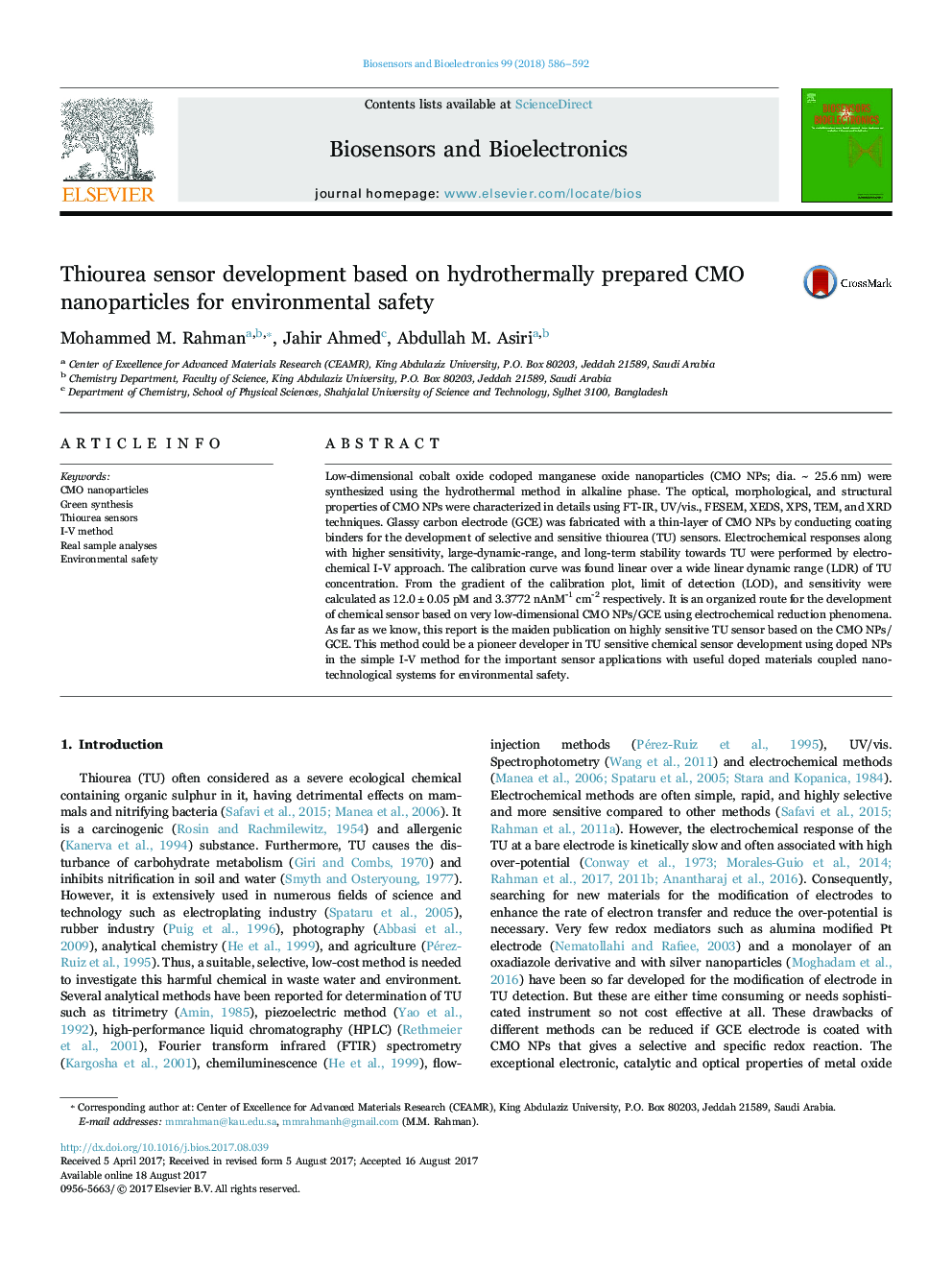| Article ID | Journal | Published Year | Pages | File Type |
|---|---|---|---|---|
| 5031374 | Biosensors and Bioelectronics | 2018 | 7 Pages |
â¢CMO nanoparticles prepared by facile hydrothermal method.â¢Highly sensitive thiourea sensor by reliable I-V method.â¢Selective enzyme-less thiourea sensor development.â¢Sensor exhibits a large-linear dynamic ranges.â¢Effective sensor for health care and environmental fields.
Low-dimensional cobalt oxide codoped manganese oxide nanoparticles (CMO NPs; dia. ~ 25.6 nm) were synthesized using the hydrothermal method in alkaline phase. The optical, morphological, and structural properties of CMO NPs were characterized in details using FT-IR, UV/vis., FESEM, XEDS, XPS, TEM, and XRD techniques. Glassy carbon electrode (GCE) was fabricated with a thin-layer of CMO NPs by conducting coating binders for the development of selective and sensitive thiourea (TU) sensors. Electrochemical responses along with higher sensitivity, large-dynamic-range, and long-term stability towards TU were performed by electrochemical I-V approach. The calibration curve was found linear over a wide linear dynamic range (LDR) of TU concentration. From the gradient of the calibration plot, limit of detection (LOD), and sensitivity were calculated as 12.0±0.05 pM and 3.3772 nAnM-1 cm-2 respectively. It is an organized route for the development of chemical sensor based on very low-dimensional CMO NPs/GCE using electrochemical reduction phenomena. As far as we know, this report is the maiden publication on highly sensitive TU sensor based on the CMO NPs/GCE. This method could be a pioneer developer in TU sensitive chemical sensor development using doped NPs in the simple I-V method for the important sensor applications with useful doped materials coupled nano-technological systems for environmental safety.
